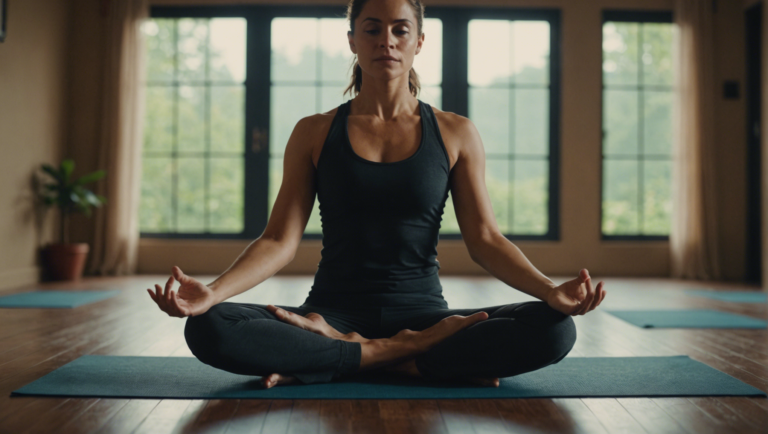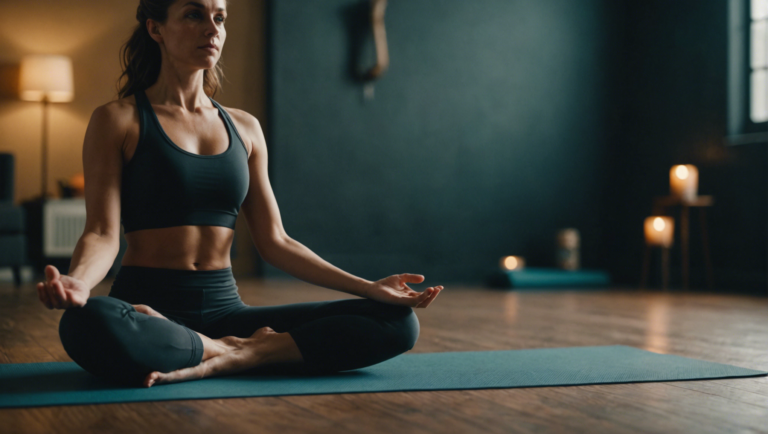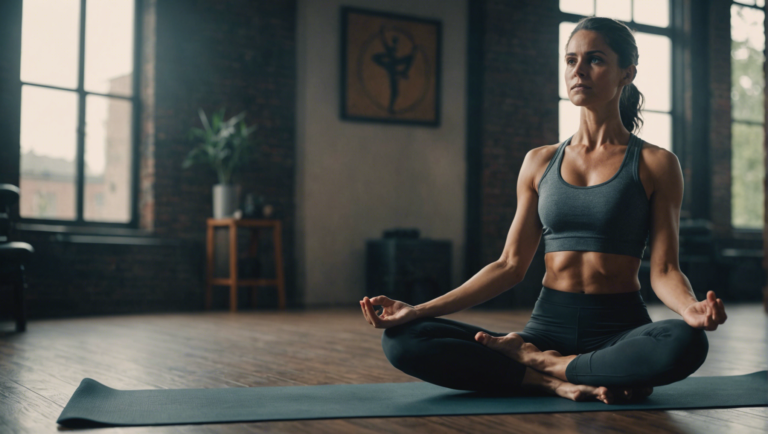Guidelines For Practicing Warm Vinyasa Yoga: Understanding Its Benefits And Techniques
Understanding the Benefits of Warm Vinyasa Yoga Practice
The Many Benefits of Warm Vinyasa Yoga Practice
Warm Vinyasa Yoga, a dynamic form of yoga that links movement with breath, has gained immense popularity for its numerous health benefits. This style of yoga involves a series of poses that flow seamlessly from one to another, creating a dance-like sequence. When practiced in a warm room, typically around 85-90 degrees Fahrenheit, it adds an extra element of intensity and mindfulness to the practice. Let’s delve into the understanding of the benefits of incorporating Warm Vinyasa Yoga into your wellness routine.
Physical Benefits of Warm Vinyasa Yoga
Enhances Flexibility:
The heat in the room during Warm Vinyasa Yoga helps to loosen muscles, allowing for a deeper stretch. This increased flexibility can lead to improved range of motion in the joints and better overall mobility. Over time, consistent practice can help alleviate muscle tightness and reduce the risk of injury.
Strengthens Muscles:
As you flow through various poses in Warm Vinyasa Yoga, you engage different muscle groups, building strength throughout your entire body. The heat intensifies the workout, challenging your muscles further and promoting muscle tone. With regular practice, you can expect to see increased muscle endurance and overall strength.
Detoxifies the Body:
The combination of movement, breath, and heat in Warm Vinyasa Yoga creates a purifying effect on the body. Sweating helps to release toxins through the skin, cleansing the body from the inside out. This detoxification process can leave you feeling rejuvenated and energized after each session.
Mental and Emotional Benefits of Warm Vinyasa Yoga
Reduces Stress and Anxiety:
The mindful breathing techniques practiced in Warm Vinyasa Yoga help calm the mind and reduce stress levels. The heat in the room promotes relaxation and can aid in releasing tension held in the body. By focusing on the present moment during the practice, you can cultivate a sense of inner peace and tranquility.
Improves Mental Clarity:
The meditative aspect of Warm Vinyasa Yoga encourages mental clarity and focus. As you synchronize breath with movement, you enter a state of flow where distractions fade away. This mental concentration not only enhances your yoga practice but can also carry over into your daily life, improving decision-making and productivity.
Tips for Practicing Warm Vinyasa Yoga
-
Stay Hydrated: Drink plenty of water before and after your Warm Vinyasa Yoga practice to stay hydrated, especially in the heated room.
-
Listen to Your Body: Pay attention to how you feel in each pose and modify as needed to prevent injury and honor your body’s limits.
-
Breathe Mindfully: Focus on deep, intentional breathing throughout the practice to enhance the mind-body connection and stay present.
Integrating Warm Vinyasa Yoga into your fitness routine can yield a myriad of physical, mental, and emotional benefits. Whether you are looking to increase flexibility, build strength, reduce stress, or enhance focus, this invigorating practice offers something for everyone. Embrace the warmth, flow with your breath, and experience the transformative power of Warm Vinyasa Yoga.
Techniques for Safely Executing Vinyasa Flow Sequences
Vinyasa yoga, often referred to as Vinyasa Flow, is a dynamic yoga style that synchronizes movement with breath to create a continuous flow of postures. It is a popular form of yoga that offers a variety of physical, mental, and emotional benefits. When practicing Vinyasa yoga, it is essential to understand the techniques for safely executing the flow sequences to prevent injuries and maximize the benefits of the practice.
Importance of Proper Alignment
Proper alignment is crucial when practicing Vinyasa yoga to ensure that the body is positioned correctly in each posture. Maintaining proper alignment not only helps to prevent injuries but also allows for the effective engagement of the muscles and the optimal flow of energy throughout the body. Paying attention to alignment also helps to deepen the practice and experience the full benefits of each posture.
Breath Awareness and Control
One of the key aspects of Vinyasa yoga is the synchronization of movement with breath. Each movement is linked to either an inhalation or an exhalation, creating a seamless flow between postures. Focusing on breath awareness and control helps to calm the mind, increase concentration, and enhance the mind-body connection. It is important to prioritize breath throughout the practice to stay present and grounded.
Building Strength and Flexibility
Vinyasa yoga sequences are designed to build strength, flexibility, and endurance. By moving through a series of poses that flow together, practitioners engage various muscle groups and work on improving flexibility in different parts of the body. Regular practice of Vinyasa yoga can lead to increased muscle tone, better posture, and enhanced overall physical fitness.
Mindfulness and Meditation
In addition to the physical benefits, Vinyasa yoga also offers mental and emotional benefits. The constant focus on breath and movement promotes mindfulness, helping practitioners stay present and grounded on the mat. Vinyasa flow sequences can also be a form of moving meditation, allowing individuals to quiet the mind, reduce stress, and cultivate inner peace.
Modifications and Props
It is important to listen to your body and make modifications as needed when practicing Vinyasa yoga. Not every pose may be accessible to everyone, and using props such as blocks, straps, or blankets can help support the body and deepen the practice. Honoring your body’s limitations and making adjustments when necessary is key to practicing safely and avoiding injuries.
Practicing Vinyasa Flow yoga can be a transformative experience for both the body and the mind. By understanding and implementing proper techniques, such as aligning the body correctly, focusing on breath awareness, building strength and flexibility, embracing mindfulness, and making necessary modifications, practitioners can safely execute Vinyasa flow sequences and reap the numerous benefits of this dynamic yoga style.
The Connection Between Breath and Movement in Vinyasa Yoga
Vinyasa yoga is a dynamic and flowing style of yoga that synchronizes movement with breath. The connection between breath and movement in Vinyasa yoga is fundamental to the practice, allowing individuals to cultivate a sense of mindfulness, create internal heat, and build strength and flexibility. Understanding how breath and movement work together can enhance the overall experience of practicing Vinyasa yoga.
Importance of Breath in Vinyasa Yoga
In Vinyasa yoga, the breath is considered the bridge between the body and the mind. Each movement is linked to either an inhale or an exhale, creating a seamless flow from one pose to the next. The ujjayi breath, often used in Vinyasa practice, involves breathing in and out through the nose with a slight restriction at the back of the throat, producing a soft oceanic sound. This controlled breathing technique helps focus the mind, regulate the body’s energy, and generate heat during the practice.
Benefits of Coordinating Breath with Movement
Coordinating breath with movement in Vinyasa yoga offers numerous benefits. By synchronizing each pose with either an inhale or exhale, practitioners can deepen their stretches, maintain proper alignment, and prevent injury. The breath acts as a guide, helping individuals stay present on their mats and cultivate a meditative state. This mindful breathing not only enhances physical performance but also promotes mental clarity and emotional balance.
Techniques for Breath Awareness
To cultivate awareness of breath in Vinyasa yoga, practitioners can start by focusing on the quality and sound of their breath during the practice. Paying attention to the rhythm of inhalations and exhalations can help individuals stay grounded and connected to the present moment. Additionally, integrating breath retention (kumbhaka) between poses can facilitate a sense of internal stillness and concentration. Mindful breathing techniques not only enhance the overall practice but also carry over into daily life, promoting calmness and resilience.
Flowing with Breath in Vinyasa Sequences
In Vinyasa yoga, sequences are often Vinyasa-based, where movements are seamlessly coordinated with the breath. The term "Vinyasa" refers to the transition between poses initiated by a specific movement, such as Chaturanga or Upward-Facing Dog. By flowing through these sequences with conscious breathing, practitioners can create a moving meditation that harmonizes the body, breath, and mind. The continuous flow of breath and movement in Vinyasa sequences offers a cardiovascular workout while promoting a sense of fluidity and grace.
The connection between breath and movement in Vinyasa yoga is a powerful tool for enhancing the mind-body connection. By paying attention to the breath, coordinating it with movement, and cultivating breath awareness, practitioners can elevate their practice to a more profound level. The rhythmic flow of breath in Vinyasa yoga not only improves physical performance but also nurtures mental focus and emotional well-being. Embracing the unity of breath and movement in Vinyasa practice can lead to a transformative yoga experience both on and off the mat.
How to Cultivate Mindfulness Through Warm Vinyasa Yoga
Mindfulness is a state of active awareness towards the present moment, allowing individuals to acknowledge and accept their thoughts, feelings, and bodily sensations without judgment. Warm Vinyasa Yoga combines the elements of mindfulness with a flowing sequence of yoga poses, creating a moving meditation that not only enhances physical well-being but also nurtures mental clarity and emotional balance. In this article, we will delve into the guidelines for practicing Warm Vinyasa Yoga, understanding its benefits, and exploring the techniques to cultivate mindfulness through this dynamic practice.
The Essence of Warm Vinyasa Yoga
Warm Vinyasa Yoga, often practiced in a heated room, involves synchronizing breath with movement to flow from one pose to another seamlessly. The heat promotes flexibility and detoxification while the continuous flow of poses builds strength and endurance. This dynamic practice not only energizes the body but also calms the mind, making it an excellent avenue for cultivating mindfulness.
Benefits of Practicing Warm Vinyasa Yoga
-
Physical Well-being: Warm Vinyasa Yoga increases flexibility, strengthens muscles, improves cardiovascular health, and enhances overall physical well-being.
-
Mental Clarity: The focused breathing and mindful movement in Warm Vinyasa Yoga help clear the mental clutter, promoting a state of calm and mental clarity.
-
Emotional Balance: By encouraging practitioners to stay present and non-judgmental, Warm Vinyasa Yoga fosters emotional resilience and balance, helping individuals manage stress and anxiety effectively.
-
Mindfulness Cultivation: The fluidity of the practice creates opportunities to anchor awareness in the present moment, fostering the development of mindfulness both on and off the mat.
Techniques for Cultivating Mindfulness in Warm Vinyasa Yoga
-
Focused Breathing: Mindful breathing is the cornerstone of cultivating mindfulness in Warm Vinyasa Yoga. By linking each movement with a specific breath, practitioners anchor themselves in the present moment, fostering a deep sense of awareness.
-
Body Awareness: Paying attention to the sensations in the body during each pose cultivates a deeper connection between the mind and body. This heightened awareness allows individuals to appreciate their bodies’ capabilities and limitations without judgment.
-
Non-judgmental Observation: Practicing non-judgmental observation involves acknowledging thoughts, emotions, and physical sensations as they arise during the practice without attaching labels or critiques. This practice cultivates self-compassion and acceptance.
-
Intention Setting: Setting an intention before each Warm Vinyasa Yoga practice helps individuals stay focused and aligned with their goals both on and off the mat. Whether it’s gratitude, patience, or acceptance, intentions guide the practice towards mindfulness.
In
Warm Vinyasa Yoga offers a transformative path towards mindfulness, combining the physical benefits of yoga with the mental clarity of meditation. By following the guidelines for practicing Warm Vinyasa Yoga and embracing its techniques, individuals can enrich their overall well-being, cultivate mindfulness, and embark on a journey of self-discovery and inner peace.
Exploring Advanced Variations and Progressions in Vinyasa Practice
Vinyasa yoga is a dynamic practice that synchronizes movement with breath, creating a flow-like sequence. As practitioners progress in their journey, exploring advanced variations and progressions within the Vinyasa practice can offer new challenges and opportunities for growth. These advanced variations not only help in developing strength, flexibility, and balance but also deepen one’s connection to the mind-body-spirit trinity.
The Importance of Advancing Your Vinyasa Practice
Advancing in Vinyasa yoga goes beyond physical benefits; it also nurtures mental resilience and emotional well-being. By challenging oneself with advanced variations, practitioners can cultivate a sense of mindfulness, focus, and determination. These progressions encourage individuals to step out of their comfort zones, fostering personal growth and self-discovery on and off the mat.
Exploring Arm Balances and Inversions
Arm balances and inversions are hallmark elements of advanced Vinyasa practice. Poses like Crow Pose (Bakasana), Handstand (Adho Mukha Vrksasana), and Headstand (Sirsasana) require not only physical strength but also mental concentration and body awareness. These challenging postures help in building upper body strength, core stability, and overall coordination. Practicing arm balances and inversions can boost confidence and courage as individuals learn to overcome fear and self-doubt.
Deepening Backbends and Forward Folds
Backbends and forward folds are another set of postures that can be advanced in Vinyasa yoga. Deepening backbends like Wheel Pose (Urdhva Dhanurasana) or Camel Pose (Ustrasana) enhances spinal flexibility and opens the heart center. On the other hand, advancing forward folds such as Standing Forward Bend (Uttanasana) or Seated Forward Fold (Paschimottanasana) can increase hamstring flexibility and release tension in the back body. These postures promote emotional release, introspection, and surrender.
Breathwork and Transitions
Advanced Vinyasa practice also involves refining breathwork techniques and seamless transitions between postures. Integrating Ujjayi breath, or the victorious breath, throughout the practice helps in maintaining a steady rhythm and internal focus. Smooth transitions not only add grace and fluidity to the sequence but also challenge practitioners to stay present and connected to each movement. Mindful breathing and intentional transitions elevate the practice from mere physical exercise to a moving meditation.
Seeking Guidance and Practicing Safely
As practitioners venture into advanced variations and progressions in Vinyasa yoga, it is vital to seek guidance from experienced teachers. Proper alignment cues, modifications, and hands-on adjustments ensure safety and prevent injuries during challenging poses. Listening to the body, honoring its limitations, and practicing with awareness are key principles to follow in advanced Vinyasa practice. Remember that progress is a personal journey, and each individual’s advancement may look different.
Delving into advanced variations and progressions in Vinyasa yoga can be a rewarding and transformative experience. By embracing the challenges, refining techniques, and expanding one’s practice, practitioners can deepen their connection to both the physical and spiritual aspects of yoga. Through dedication, patience, and an open mind, advancing in Vinyasa practice can lead to profound growth and self-discovery on all levels.
Conclusion
With a comprehensive overview of the benefits of warm Vinyasa yoga practice, the techniques for safely executing Vinyasa flow sequences, the connection between breath and movement in Vinyasa yoga, the ways to cultivate mindfulness through warm Vinyasa yoga, and the exploration of advanced variations and progressions in Vinyasa practice, it becomes evident that this dynamic form of yoga offers a plethora of physical, mental, and emotional advantages for practitioners of all levels.
To begin with, understanding the benefits of warm Vinyasa yoga practice unveils a range of advantages that make it a popular choice among yoga enthusiasts. The combination of heat and dynamic movements increases flexibility, improves cardiovascular health, boosts metabolism, and aids in detoxification through sweat. This results in a more efficient workout that promotes overall well-being and vitality.
Moreover, mastering the techniques for safely executing Vinyasa flow sequences is crucial to prevent injuries and enhance the effectiveness of the practice. By focusing on proper alignment, engaging core muscles, and transitioning mindfully between poses, practitioners can experience a seamless flow that nurtures strength, balance, and endurance while reducing the risk of strain or overexertion.
The deep connection between breath and movement in Vinyasa yoga serves as a cornerstone of the practice, encouraging individuals to synchronize their breath with each pose transition. This conscious breathing not only increases oxygen flow to the muscles but also calms the mind, promotes mental focus, and allows practitioners to find a sense of inner stillness amidst the fluidity of movement.
Furthermore, cultivating mindfulness through warm Vinyasa yoga offers a transformative experience that extends beyond the physical realm. By being fully present in each moment, individuals can release distractions, alleviate stress, and connect with their inner selves on a profound level. This practice of mindfulness not only enhances the yoga session but also carries over into daily life, fostering a greater sense of awareness and resilience.
Exploring advanced variations and progressions in Vinyasa practice challenges practitioners to push their boundaries and expand their practice to new heights. By stepping out of their comfort zones, individuals can tap into hidden strengths, refine their skills, and unlock new possibilities on their yoga journey. This spirit of exploration and growth not only benefits the body but also cultivates a mindset of continuous learning and evolution.
Warm Vinyasa yoga is not just a physical workout but a holistic practice that nurtures the body, mind, and spirit. By embracing the benefits, techniques, breath-work, mindfulness, and advanced variations of Vinyasa practice, individuals can embark on a transformative journey of self-discovery, empowerment, and well-being. Whether you are a beginner or an experienced yogi, incorporating warm Vinyasa yoga into your routine can unlock a world of potential and lead you towards a path of balance, vitality, and inner peace.



